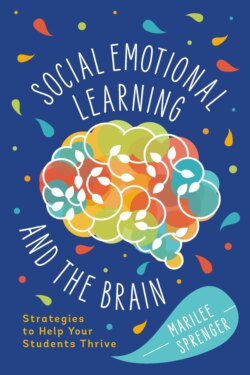Читать книгу Social-Emotional Learning and the Brain - Marilee Sprenger B. - Страница 41
На сайте Литреса книга снята с продажи.
Nurture Relationships
ОглавлениеCook and his colleagues (2018) at the University of Minnesota conducted a study of classrooms in which teachers used a series of techniques centered on establishing, maintaining, and restoring relationships. The original study was done with 220 4th and 5th graders, and it was repeated with middle school students. The results showed that academic engagement increased by 33 percent and disruptive behavior decreased by 75 percent—outcomes that resulted in more quality, uninterrupted classroom time. The establish-maintain-restore (EMR) method breaks relationships into three steps: starting and establishing, maintenance to avoid deterioration, and repair to fix any breakdown. Strategies recommended at each step include the following:
Starting and Establishing
Offer positive greetings at the door (as described in this chapter).
Ask open-ended and reflective questions.
Incorporate student-led activities.
Make time for one-on-one encounters (as in the 2 × 10 strategy).
Maintenance
Check in with students regularly.
Recognize good behavior.
Keep interactions positive.
I like to add Stephen Covey's ways to make deposits in emotional bank accounts:
Keep commitments.
Attend to the little things.
Clarify expectations.
Repairing and Restoring
Avoid holding mistakes over students' heads.
Criticize behavior, not the student.
Take responsibility for your part of the problem.
Work with those affected—face up.
Make things right—fix up.
Change behavior—follow up.
The process of relationship building, maintaining, and repairing comes in many different forms. Letting students get to know you is the first step.
